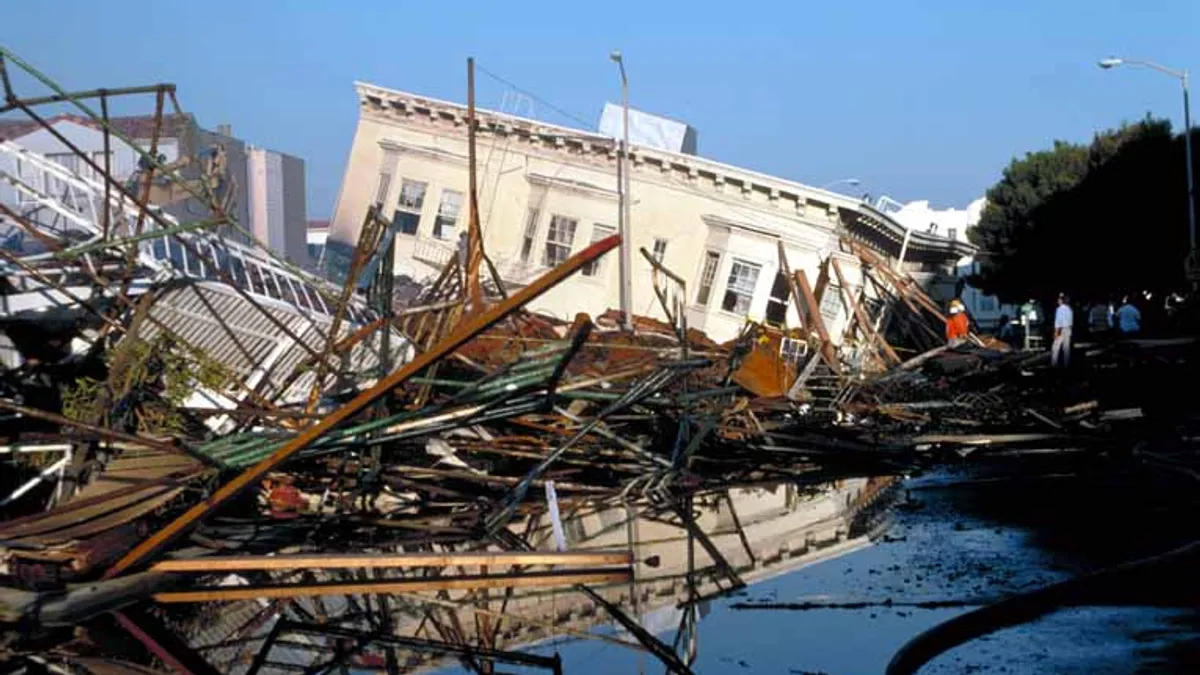Dive Brief:
- Thirty-nine high rises in San Francisco are at risk of collapse in a major earthquake, according to a new analysis by the U.S. Geological Service (USGS). The list includes the former Bank of America building, the headquarters of Pacific Gas and Electric, three hotels and the Salesforce West tower.
- At issue is a building technique that involved welding columns and beams together rather than using bolts and rivets. The strategy was cheaper and faster, but makes the buildings more flexible and at risk during an earthquake.
- The welding technique was outlawed by the city in 1994 after the Northridge earthquake in Los Angeles damaged critical joints in several buildings that had been welded.
Dive Insight:
San Francisco has been working to upgrade potentially at-risk buildings, but it remains a hefty effort given how many buildings need retrofits. Keith Porter, who helped lead the USGS study, told the The New York Times, "We don’t know how to deal with a problem this big.” San Francisco has offered incentives to repair at-risk buildings; in 2009, then-Mayor Gavin Newsom expedited permits and agreed to waive fees for so-called "soft-story buildings," which have garages or windows on the bottom floor, and San Jose has explored similar incentives.
The USGS report acts as another reminder that existing infrastructure remains at risk from a natural disaster, and the possibility grows more likely with climate change. That makes resiliency strategies more important, ensuring that buildings are being protected and that new infrastructure is built with an eye towards the worst-case scenario.
It’s sometimes easier said than done. Johanna Hoffman wrote in Smart Cities Dive that "we have an unfortunate habit of overlooking risk in this country.” She cited the destruction from Hurricane Sandy in New York, which was in the range of predictions, as proof that "facing a new reality is scary, time-consuming and often expensive, making scientific findings all too tempting to address later down the road."
Cities are taking steps to guard themselves; Los Angeles Mayor Eric Garcetti in March proposed mandatory retrofits to make certain buildings more resilient to earthquakes. The Rainier Square tower in Seattle is being built with a rebar-free core, meant to protect against seismic risk, while also being faster and cheaper to build.
It’s also worth remembering that retrofitting or setting more protective standards is not just a necessary safety step, but can save money for at-risk cities. A National Institute of Building Sciences study in January found that every dollar spent on federal grants for disaster resiliency or mitigation saved the country an average of $6 down the road.











